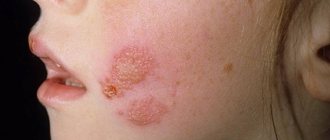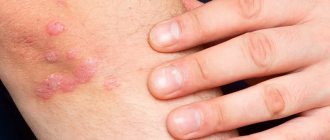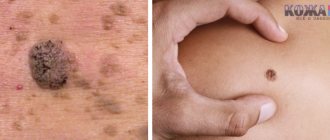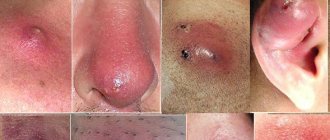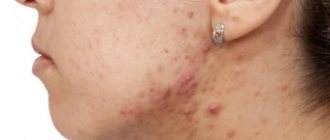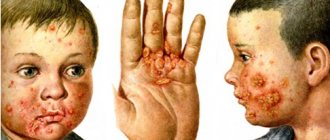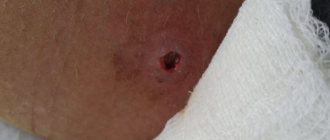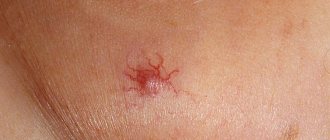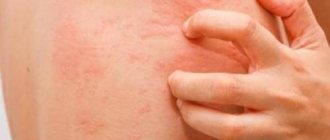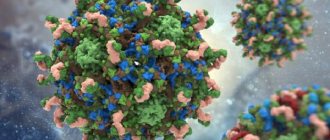Papillomas and warts are benign growths on the skin. They are formed from squamous epithelium and in appearance they are growths of different sizes. The main cause of their appearance is HPV – human papillomavirus. You can get rid of them in different ways, one of which is removal. However, before removing them, it is necessary to undergo a complete diagnosis of the body and identify the factors that provoked their appearance. How to get rid of papillomas and warts? How to effectively remove them at home?
Types of papillomas and warts
It is almost impossible to protect your body from the appearance of papillomas. Almost every person has the virus, but for some it is in a “dormant” state. Under certain circumstances it begins to manifest itself.
Several decades ago, it was believed that the only way to become infected with HPV was through unprotected sexual intercourse with a carrier. But actually it is not. There are other causes of papillomas.
- Neoplasms appear after using foreign hygiene products. These could be washcloths, manicure accessories, a towel, etc.
- Body contact, provided that the person has small wounds or abrasions on the skin.
- Service in beauty salons that do not pay due attention to disinfection of working tools.
- Visiting public baths, toilets, gyms and other similar establishments.
What else can cause papillomas? There are several provoking factors.
- Infection during childbirth. The virus is transmitted from mother to child
- Prolonged exposure to the sun. According to doctors, people with fair skin and a large number of moles are more likely than others to develop neoplasms
- Taking birth control medications
- Bad habits, including excessive drinking and smoking
- Colds that weaken the immune system
- Chronic diseases of internal organs
- Papillomas can also appear on the face due to frequent stress.
- Ignoring hygiene procedures
There are several types of papillomas and warts.
- Pointed genital. Appears in both women and men. The shape is similar to a cauliflower inflorescence. Cause severe itching and discomfort.
- Simple warts. They have a round shape. They can appear suddenly and disappear just as suddenly after several months.
- Flat/juvenile warts. Most often they form during puberty, when the body experiences hormonal imbalance. Usually flat. They have a pale pink or beige tint.
- Thread-like. Otherwise called acrochords. Elongated, light pink or brown. In most cases, they form on the body of women.
- Plantar. The name speaks for itself. In addition to itching, such formations cause severe discomfort when walking. In appearance, they are similar to calluses, in the center of which there is a black dot.
- Oncogenic. The most dangerous type of neoplasm. It is a sign of cancer of the larynx and genital organs.
Each of these types has not only its own manifestations, but also treatment features.
Etiology
The first and most likely cause of the appearance of such pathological processes on the human body is the human papillomavirus (HPV). In turn, the virus can enter the body due to the following reasons:
- promiscuity;
- abuse of alcohol, smoking, drugs;
- weakened immune system;
- unprotected sexual contact;
- metabolic disease;
- diseases associated with the gastrointestinal tract;
- lack of personal hygiene.
It is worth taking into account that if the mother is infected with the virus, the latter can be transmitted to the newborn baby. You should also pay attention to factors related to the virus
Infection can only occur through close contact (most often through sexual contact). Anal and oral-genital sex are also included.
Infection is possible only in the case of microtraumas on the skin of a healthy person; Infection is possible at a very early age (during childbirth); It is impossible to completely remove HPV from the body (it can only be suppressed by strengthening the immune system).
It is also noteworthy that the virus may not show any symptoms for a long time. The incubation period lasts from several months to several years.
Doctors' opinions on the most effective methods of treating warts and papillomas
The chief physician of Moscow City Hospital No. 62 describes his vision on this matter. Anatoly Nakhimovich Makhson Medical practice: more than 40 years.
“I have been treating people’s papillomas and warts for many years. I’m telling you as a doctor, papillomas along with HPV and warts can really lead to serious consequences if they are not dealt with.
The human papillomavirus is present in everyone on whose body there are papillomas, moles, warts and other pigmented formations. According to rough estimates, 80-85% of the planet's population has it. By themselves they are not dangerous. The problem is that an ordinary papilloma can become melanoma at any time.
These are incurable malignant tumors that kill a person in just a few months and from which there is no salvation.
Unfortunately, in Russia and the CIS countries, pharmaceutical corporations sell expensive medications that only relieve symptoms, thereby hooking people on one drug or another. That is why in these countries there is such a high percentage of cancer diseases and so many people suffer from “non-working” drugs.
The only drug that I want to recommend, and it is also officially recommended by WHO for the treatment of papillomas and warts, is Papinol. This drug is the only remedy that has an effect not only on external factors (that is, it removes papillomas), but also acts on the virus itself. At the moment, the manufacturer has managed not only to create a highly effective product, but also to make it accessible to everyone. In addition, within the framework of the federal program, every resident of the Russian Federation and the CIS can receive it for 149 rubles.”
To find out more, read this article.
What is the difference between a papilloma and a wart?
In fact, there is no particular difference between these concepts. It's not the same thing. But both papilloma and wart are manifestations of HPV. Their differences are much smaller than their similarities. Here are some similarities:
- caused by the same virus
- As soon as the virus enters the cells, the process of chaotic division begins
- in the first stages, all neoplasms are benign
- both there and there there are blood vessels
- Both papillomas and warts manifest themselves with severe itching, swelling, redness
- In case of injury, both types of neoplasms bleed
- subject to removal
- require medication
How to distinguish a papilloma from a wart, if both of them can be flat, hanging, etc.? To do this, it is better to consult a doctor who will carry out appropriate diagnostics.
Papillomas and warts on the body
The classification of papillomas and warts is made not only by their appearance, but also by location. They can appear on the following parts of the body:
- on the face
- on the head
- On the hand
- on the neck
- on foot
- on the penis and female genitalia
- rarely - in the respiratory tract, for example in the throat and larynx
Each of the listed types has its own characteristics. For example, the reason for the appearance of formations in the neck area is not known for certain. However, scientists have found that they appear more often in men than in women.
Papillomas and warts during pregnancy
During the period of bearing a child, the appearance of tumors on the body deserves special attention. The reason for their appearance is usually hormonal changes in a woman’s body, trauma and friction caused by swelling, and exacerbation of chronic diseases.
Until the baby is born, the virus poses no danger to the baby. Infection usually occurs during childbirth. Particularly large tumors are often an indication for a cesarean section.
Is it worth looking for HPV and what is the best way to do it? Read about this in the article about tests.
It is better to remove papillomas that appeared during pregnancy after childbirth, since such treatment can cause developmental disorders in children.
Filiform papillomas (acrochords)
They occur in 50% of the population over 50 years of age, most often in the armpits, groin, neck, and around the eyes. The process begins with the appearance of small yellowish or slightly colored bumps, then increasing and turning into elongated dense elastic formations up to 5-6 mm in size. In places of possible trauma, papillomas can become inflamed.
They do not disappear spontaneously. Local epithelial hyperplasia (Beck's disease).
The causative agents are human papillomaviruses 13 and 32.
The disease was first described in American Indians. Observed on the mucous membranes of the mouth, tongue, lips in the form of small merging papillary elevations.
Epidermodysplasia verruciformis (Lewandowski-Lutz disease).
Pathogens: HPV-5, 8, 9, 12, 14, 15, 17, 19-29. Rarely registered. The disease is more typical in childhood and early adolescence, and sometimes has a familial character.
It manifests itself by the appearance of multiple flattened red-brown spotted papillomas on the hands and feet. In a third of patients, malignant degeneration is observed, especially in open areas of the body exposed to solar radiation.
Treatment of papillomas and warts
How and what is the best way to treat neoplasms? Which doctor will help in this matter?
If papillomas appear, you should immediately consult a doctor. Which one, first of all, depends on its location. This could be a gynecologist, urologist, dermatologist, etc. One of the specialists will clarify the diagnosis and refer you for diagnostics. Another will remove the formation or prescribe another treatment.
With proper treatment, papillomas and warts will dry out to the roots and disappear. If there is no therapy, serious complications may develop:
- Bleeding
- Spread of neoplasms across the skin
- Malignant tumors
- Pseudo-erosion of the cervix
- Infection after accidental removal of a papilloma
And that's not all there is to be afraid of. Therefore, when the first unpleasant symptoms appear, you should immediately consult a doctor.
Important! Under no circumstances should you self-medicate or remove tumors on your own. This can lead to unpredictable consequences.
Complications
Doctors advise removing papillomas as early as possible, after their first appearance. First, it will reduce the chances of the virus spreading further. Secondly, it will reduce the risk of injury to these neoplasms, which can lead to serious consequences. Among them:
- the most undesirable development of events is tissue malignancy, when cells acquire the properties of a malignant tumor;
- one of the side effects of removing papillomas on the face is the spread of the virus to nearby tissues, i.e. its growth;
- During surgery, the affected areas may also be damaged;
- due to constant trauma to papillomas, they can grow into extensive inflammation, which can result in tissue necrosis;
- for the same reason, there may be further spread of the virus across the face, and accordingly, there will be much more rashes.
To avoid dangerous consequences, doctors advise quickly getting rid of papillomas on the face and preferably by turning to professionals for help. Home treatment and folk remedies are used only if they are approved by the attending physician. And in order not to run around hospitals and pharmacies in search of a miracle cure, you need to devote more time to preventing the disease.
Additional Information. Many sources indicate that papillomas are harmless neoplasms that are distinguished by benign properties, i.e. they are not cancerous. But, given the fact that strains of papillomavirus can be oncogenic, nothing prevents them from moving from the category of harmless to the category of malignant tumors.
Effective remedies for papillomas and warts
To remove growths, you can use medications that are sold at any pharmacy, as well as folk remedies. It is difficult to say which of them is the best and most effective. It all depends on the general health of the patient, concomitant diseases and many other factors. Doctors prescribe both time-tested and new remedies against papillomas.
One popular method is laser removal, which is definitely worth reading about here.
So, treatment begins with taking antiviral medications. They help strengthen the immune system, thereby strengthening the body's defenses. Most often prescribed:
- Viferon
- Keravort
- Panavir
- Lycopid
It happens that such medications (sold in every pharmacy) are prescribed after surgery has been performed. This will enhance the effectiveness of treatment and protect against relapse.
You can get rid of papillomas in another way, using products for external use. This is an ointment for papillomas, a gel for warts, a cream, a pencil, drops, liquid (aerosol), etc. These drugs have the same effect as tablets. Plus, they help get rid of the external manifestations of the virus. They can be used to remove tumors on all parts of the body, even on the face. Also, in some cases, injections with special solutions are indicated. There are several examples:
- ointment "Veregen"
- aerosol "CryoPharma"
- Feregol solution
- gel "Dermavit"
How to treat HPV in men with folk remedies
The following home treatment recipes are popular:
- A small fresh papilloma can disappear if you very often lubricate the growth with chicken protein. Such home treatments can be carried out by alternating it with fresh dandelion juice.
- Another popular method: mix garlic pulp with Vaseline (1:2) and apply it to the tumor, covering it with an adhesive bandage. Change the compress every 3-4 hours three times a day.
- Instead of garlic, it is possible to treat genital growths in men with an ancient folk remedy - fresh celandine juice. However, no longer than 8-10 days!
- Fresh potato juice helps speed up home treatment of papillomas: drink 2-3 times 1/2 cup before meals.
be careful
The presence of papillomas, warts, condylomas, moles and spines on the body is the first sign of malignant melanoma!
We hasten to warn you that most medications “treat” warts, papillomas, moles, etc. - this is a complete deception of marketers who make hundreds of percentage points on drugs whose effectiveness is zero. They do not cure the disease, but only mask the symptoms.
The pharmacy mafia makes huge money by deceiving sick people.
But what to do? How to treat if there is deception everywhere? Doctor of Medical Sciences Anatoly Makhson conducted his own investigation and found a way out of this situation. In this article, the Doctor also told how to 100% protect yourself from melanoma, for only 149 rubles! Read the article in the official source via the link.
Treatment with celandine
If there are no contraindications, for example, an allergic reaction, the use of traditional medicine is indicated. Among them are celandine, castor oil, apple cider vinegar, various Thai and Chinese remedies, herbs for papillomas and warts. Celandine is used most often.
Products based on this plant can be used in several cases.
- The neoplasm is benign.
- Papilloma does not grow.
- There is no risk of the growth transforming into a malignant tumor.
- The drug is used as directed and under the supervision of a physician.
There are several options for using celandine.
- Using the juice, wipe the papillomas several times a day until they dry out and fall off. This usually takes about a month.
- Transfer the dried celandine to a glass jar. Pour in vegetable oil until it completely covers the grass. Place in a place protected from light to infuse (7 days). Then strain and add the same amount of oil. Use for compresses. Repeat the procedure daily. This remedy will be more gentle than, for example, any acid for papillomas.
- You can prepare a healing ointment at home. To do this you will need 2 parts pork fat or baby cream and 1 part crushed celandine herb. Mix the ingredients. Use to lubricate growths three times a day.
- A tincture based on this plant also turned out to be quite effective. To prepare it, you need to pour 100 g of celandine into 500 ml of 70% alcohol. Close the container and place it in a place protected from sunlight for 2 weeks. Strain. Take 15 drops orally before meals (three times a day).
According to the comments of specialists and those who have already tried this treatment on themselves, the results will not be super fast. You need to be patient.
Application of Claridol
Among medications, Claridol or Clareol deserves special attention. Its use has many advantages.
- Low consumption. A package of the drug is usually enough to eliminate tumors throughout the body.
- Lack of analogues. The product not only helps get rid of growths, but also actively fights the virus itself, without having a negative effect on the kidneys and liver.
- Has virtually no side effects. There is no itching or irritation after it.
- The risk of skin cancer is reduced by 95%. A full course of treatment allows you to protect the skin for a long time.
- Natural composition. All substances have the ability to act at the cellular level.
- There will be no scars or blemishes left after the treatment.
- Has many positive reviews.
Important! Just like other drugs, for example, Papilux, Lekker, Verrukatsid, Papilite, Vartozin or Isoprinosine, Claridol can only be used as prescribed by a doctor. Self-medication is dangerous.
Using the product is quite simple. It is liquid, so it is easy to apply to growths. There is no need to wash anything off afterwards. For a complete cure, only 10-15 procedures are enough.
Hydrogen peroxide and essential oils can also be used during treatment.
- A product based on peroxide and oak bark has proven itself well. The bark needs to be filled with 125 ml of hot water. Let it brew for a day. Pour out the water. Combine the remaining mass with 1 tbsp. hydrogen peroxide. Keep refrigerated. Use the product for compresses. The paste must be applied to the papilloma and secured with plastic wrap. Leave for half an hour. To rinse off, you will need warmed milk. The course of treatment is 21 days.
- Of the essential oils, tea tree oil is considered the most effective. Twice a day they need to wipe papillomas and warts. Can be used to treat tumors on any part of the body, even in the genital area.
If such treatment methods do not bring results, the doctor prescribes surgical removal of the tumors. After removal, the use of streptomycin ointment is indicated.
So, there are several ways to get rid of papillomas. This is the use of medications, traditional treatment or surgery. Only a doctor can give advice regarding this or that method. He also selects the desired drug, its dosage and duration of use.
We recommend watching the informational video material to clarify all the possible nuances of removing warts and papillomas:
Diagnostics
It is extremely important to correctly determine the type of tumor, taking into account oncogenicity and external similarity. Initially, the doctor conducts a clinical examination of the growth, if located on the genital organs - gynecological in women, proctological and urological in men. This is not enough to make an accurate diagnosis. To establish a reliable clinical picture, it is recommended to conduct research at the cellular level using special diagnostic methods, namely:
- cytological examination of cell morphology - to identify DNA mutations;
- colposcopy - examination of the vulva, vagina and cervix using a special microscope - colposcope;
- biopsy - sampling of cells and tissues for the purpose of diagnosing the pathogen;
- histology - a type of biopsy - to determine a precancerous condition;
- polymerase chain reaction (PCR) techniques - to identify all types of virus;
- Digene test. It is the most reliable and informative diagnostic method: it accurately determines the presence and type of HPV, the level of oncogenicity, and the degree of concentration of the pathogen in the body.
Most often, the diagnosis is made based on the results of using several methods, since individually each of them is erroneous to a certain extent.
Doctors to contact regarding this issue
Denezhkina Natalya Nikolaevna
Reshanova Lyudmila Mikhailovna
Varfolomeeva Oksana Igorevna
Chaplitsky Evgeniy Aleksandrovich, urologist-andrologist, specialist
